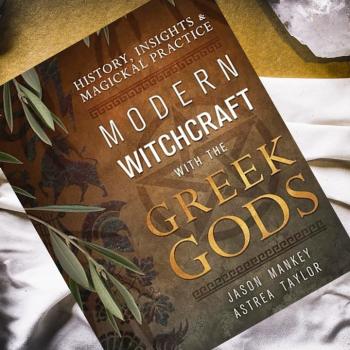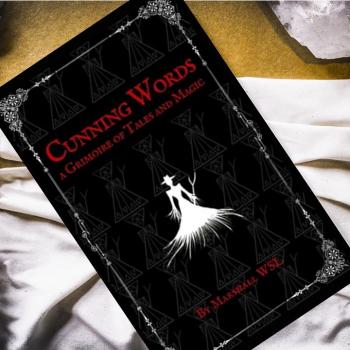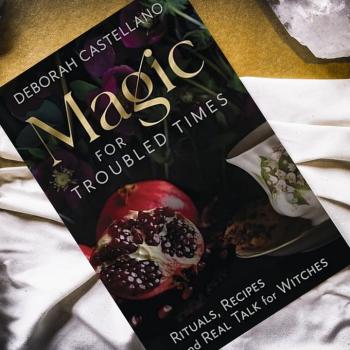On my first day of graduate school the professor told our class, “New graduate students always think that now they’re going to have access to ‘the good stuff’, that they’re going to learn some sort of secret knowledge that we kept hidden from them when they were undergraduates. What they don’t realize is that it’s the same ‘stuff’, the same knowledge they’ve been studying throughout their first four years of college; there’s just more of it.”
The secreting away of the “good stuff”, of Higher Knowledge, happens across a wide spectrum of religious and non-religious groups and has been a practice since the time before time. Secret societies such as the Freemasons and/or Illuminati, Rosicrucian, and the Knights Templar come to mind, as do the Catholic Masses of the medieval period, conducted in a language (Latin) the general population (peasants) could not possibly understand, behind a rood screen through which they could not clearly see. High Mysteries were in play. Secrets. The Good Stuff.

There are, of course, greater nuances to secret societies and medieval church architecture than are being touched upon here—I’m painting with some pretty broad brush strokes, and by no means am I a scholar on either topic. My own experience with secret societies, of being one of the insiders, is much more based in the socio-economic stratum I was born into. The uneasy awareness I have of the benefits I’ve derived from my privileged status negatively skews my view of almost any group that requires some sort of admission fee, be it financial, mental, emotional, physical or spiritual.
So it should come as no surprise that I’ve never been a member of a coven. I’ve never been through an initiation rite with a group of like-minded folks nor do I particularly care to experience one. The closest I’ve come to anything remotely resembling an initiation rite was being dragged, kicking and screaming, through my debutante year, and that was ten months of a pure and holy hell that ended in ruptured relationships and burned bridges, none of which were ever rebuilt.
And I want to be very clear that I am not positing that any one way of faith expression is better than another, or that one way is truer or more authentic or more noble or more to be desired or more anything than another. In my view, it’s not about “more than” or “less than”. Each stand of woods has within it several paths; or, in terms of the famous story of the blind men and the elephant, it’s all the same elephant. It’s all “the good stuff”.
So, initiation into a group is not for me. I walk a Solitary Path, even though at times it is exhausting. Even though at times I find I have veered far away from my path, which generally has happened when I start second-guessing myself on how I ought to be living my faith practice. (John Beckett’s post on this kind of “self-gaslighting” is well worth a read. He writes, “Your senses may sometimes confuse you, but they will not lie to you”). And I’m self-aware enough to realize that my own bad experience with a secular initiation has little or no relationship to the qualities inherent in a sacred initiation. Initiations into a spiritual group are meaningful—and hopefully meaning-filled—spiritual border stones.
As a liturgist, I understand the value of ritual and of its psycho/social components, and I understand how initiation serves to further strengthen the connective tissues of a body of believers. The experience is meant to be—and often is—profoundly moving, even life-altering, the same sort of experience I try to provide when I write liturgy for the Earth-centered spirituality group I co-lead.
And while I can sometimes access the High Mysteries during the rituals I lead, it’s far more often the case that I am so focused on what comes next that the ineffable slides right past me. I’ve made my peace with that—sometimes I think of it as the cost of leadership—but it does mean that I must be intentional about seeking out and experiencing “the good stuff” on my own, as a Solitary. It means (to paraphrase e.e. cummings) that I must keep the “ears of my ears awake” and the “eyes of my eyes” open, for one never knows when the wildness of magic is afoot.
The Opening Ritual at Chicago Pagan Pride a few years ago offered one such moment—a startling surprise to me as usually my moments of deep connection occur when I am wandering about in the woods and far away from people. In a loosely organized line, over one hundred attendees, hand-in-hand as they were able, streamed through a gateway of two lit torches and formed an ever-moving spiral of concentric circles until all had passed through the symbolic entrance.

Instead of throwing up my mental/emotional blocks as I usually do when in a crowd of strangers, I opened myself to the barely-controlled chaos of bodies of every sort and condition all walking or rolling or tripping or skipping or limping or dancing, each in their own rhythms, as the spirals grew deeper and wider and more compact. It was noisy and colorful, mismatched and pulsingly alive, with way too many people standing way too close to me . . . and it was delightfully, unutterably magical.
What meaning have I made from this experience and others like it? It’s that interpersonal relationships can offer me a peak experience that I had once thought I could only access when alone in nature. It means not getting sidetracked by semantics, and resisting the rush to judgment. It means I’m on a shared journey, whether I practice as a Solitary or in a coven. It’s all “the good stuff”, and there’s always more of it, if I remember to loosen my control and soften my borders.
Magic really is everywhere—even in places or situations that make me uncomfortable—if I only open myself to it.













